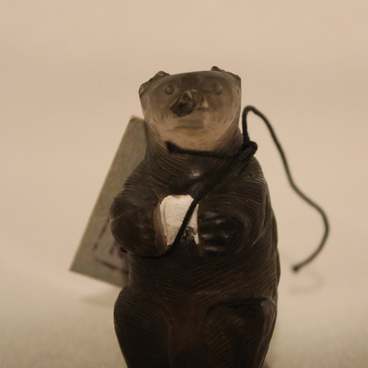Nikolai Chernyshevsky spent the morning of October 11, 1889 proofreading his translation of Georg Weber’s historical work, reading the 212th issue of the Saratov Leaflet newspaper, where an article was published about the peasants' plight because of poor harvests. Late at night he became delirious and, eventually, paralyzed.
Chernyshevsky had the first signs of the disease in August, but he never fancied medical treatment, preferring to rely on his strong constitution. On October 16th, doctors gathered at his bedside, but he was in his death throes. On the night of 17 (29) October, Chernyshevsky died of a stroke. After the Siberian exile, he had spent less than four months in his hometown of Saratov.
The church funeral service was held in the Church of St. Sergius. Nikolai Chernyshevsky was buried in Voskresenskoye cemetery of Saratov in the family tomb. Although it was forbidden to report Chernyshevsky’s death, the news quickly spread throughout Russia. By the day of his funeral, the family received a great many wreaths, letters, and wires with condolences, for example: ‘You have consigned to the ground that which was mortal in Nikolai Gavrilovich [Chernyshevsky], but his fame will live on as long as Russia has love for the ordinary people and aspiration to justice, as long as it cherishes the faith in the finest ideals of humanity’.
In 1891, Chernyshevsky’s widow, Olga, used the money collected from friends and relatives and raised from selling furniture from their apartment to have a small metal-and-colored-glass chapel installed over her late husband’s grave. It was designed by a distant relative —artist, art historian, and architect Fyodor Berenstam. The chapel originally housed the wreaths laid on the Chernyshevsky’s tomb.
In 1939, to mark the 50th anniversary of the writer’s death, a monumental red stone arc and a black obelisk were erected on his grave. Inside the arc, the inscription was made:
Chernyshevsky had the first signs of the disease in August, but he never fancied medical treatment, preferring to rely on his strong constitution. On October 16th, doctors gathered at his bedside, but he was in his death throes. On the night of 17 (29) October, Chernyshevsky died of a stroke. After the Siberian exile, he had spent less than four months in his hometown of Saratov.
The church funeral service was held in the Church of St. Sergius. Nikolai Chernyshevsky was buried in Voskresenskoye cemetery of Saratov in the family tomb. Although it was forbidden to report Chernyshevsky’s death, the news quickly spread throughout Russia. By the day of his funeral, the family received a great many wreaths, letters, and wires with condolences, for example: ‘You have consigned to the ground that which was mortal in Nikolai Gavrilovich [Chernyshevsky], but his fame will live on as long as Russia has love for the ordinary people and aspiration to justice, as long as it cherishes the faith in the finest ideals of humanity’.
In 1891, Chernyshevsky’s widow, Olga, used the money collected from friends and relatives and raised from selling furniture from their apartment to have a small metal-and-colored-glass chapel installed over her late husband’s grave. It was designed by a distant relative —artist, art historian, and architect Fyodor Berenstam. The chapel originally housed the wreaths laid on the Chernyshevsky’s tomb.
In 1939, to mark the 50th anniversary of the writer’s death, a monumental red stone arc and a black obelisk were erected on his grave. Inside the arc, the inscription was made:



